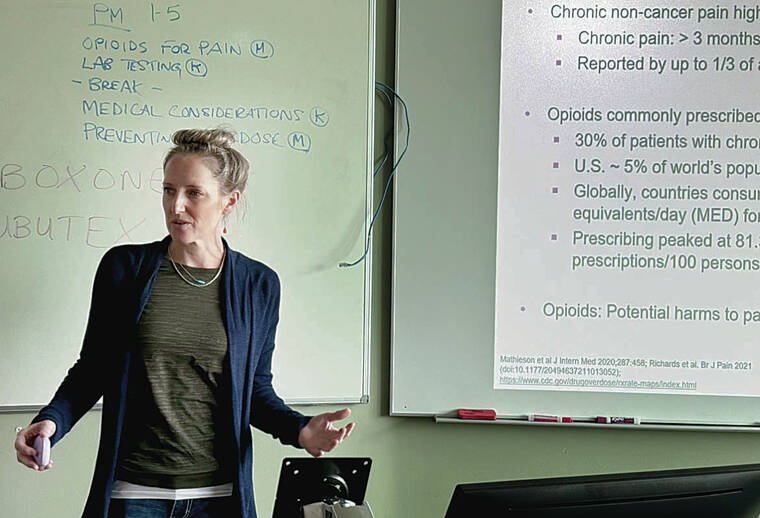Whitney’s mother asked her daughter with feelings of trepidation and devotion: “How many lives do you think you have? You’re not a cat.” Whitney, whose last name is withheld, just survived her eighth overdose; the proverb of a cat’s nine lives. She under- stood she may not survive another — there may not be a next time.
Whitney suffers from opioid use disorder: a chronic, relapsing and remitting disorder with consequences including disability and death. It causes pain and suffering to those afflicted as well as to the family and friends who love, support and surround that individual.
Opioid use disorder isn’t a failing of moral or ethical character, but rather a treatable disease. The truth is that opioids rewire the brain, hijacking its normal functioning within only a matter of days. Long-term use results in permanent brain structure changes. If we recognize disease as a sickness, disturbance or impairment of the structure and function of the brain, and not a character flaw, opioid use disorder is a disease in the most matter-of-fact definition of the word.
The nationwide opioid epidemic claimed more than 100,000 deaths in the U.S. in 2021, according to available data. The University of Washington’s MEDEX Northwest Physician Assistant program is training future clinicians to be an active part of the solution by teaching the appropriate use and prescribing of medications for opioid use disorder. This training utilizes prescribed medications for the treatment of opioid use, including specialized training with the use and prescribing of buprenorphine. Buprenorphine, for many with opioid use disorder, can be a life-saving medication with a remarkably safe medication profile and exceedingly low risk for abuse and potential for overdose. The program is providing its students medication training with specialized instructors across all campuses, including Kealakekua on Hawaii island.
Dr. Shannon Price-Schwartz is a board-certified physician in family medicine and addiction medicine, medical director of Evolve Medical Center in Kailua-Kona, and one of few providers on Hawaii practicing in addiction medicine. In her eyes, the community essentially has “no one to turn to” if people suffer from a substance use disorder, including opioid use disorder.
Clinicians in Hawaii capable of managing and prescribing medications for substance use disorder are scant at best, particularly in the face of an extraordinary shortage of health care providers. It is difficult, next to impossible even, to obtain a bed, receive life-saving treatment and safely detox in a medically suppor- ted, controlled environment.
For someone suffering with substance use disorder, there are transient moments of clarity when they are willing to seek help. This initial opportunity of willingness is unlikely to last. The stark realities of a medically underserved community and lack of trained clinicians providing treatment can make the difference between life and death. This critical window of opportunity can be lost, sometimes forever.
In my clinical practice, I regularly experience profound fear that those suffering with substance use disorder will be lost to appropriate follow-up. When I shared this with Dr. Price-Schwartz, she hands me a stack of business cards. “Take these with you to the hospital,” she insists. “Tell your patients to call me. I will get them in.”
Whitney has achieved over nine months being “clean” (sober) from all mind- and mood-altering substances. Medications and strong engagement in a program of recovery helped make this possible. Substance use disorder is the great equalizer surrounding you. From the outhouse to the White House, no one is immune from its impact. But anyone can recover.
Abandoned dreams can come back to life, and the beautiful souls living inside struggling bodies can rise like a phoenix. Whitney’s story is a miracle, but it’s not unique. Recovery is possible.
Margot Karr, B.S., MSPAS, PA-C, is an assistant professor at the University of Washington School of Medicine, Department of Family Medicine, an emergency medicine PA-C, and a faculty member of MEDEX Northwest Kona, Hawaii.

